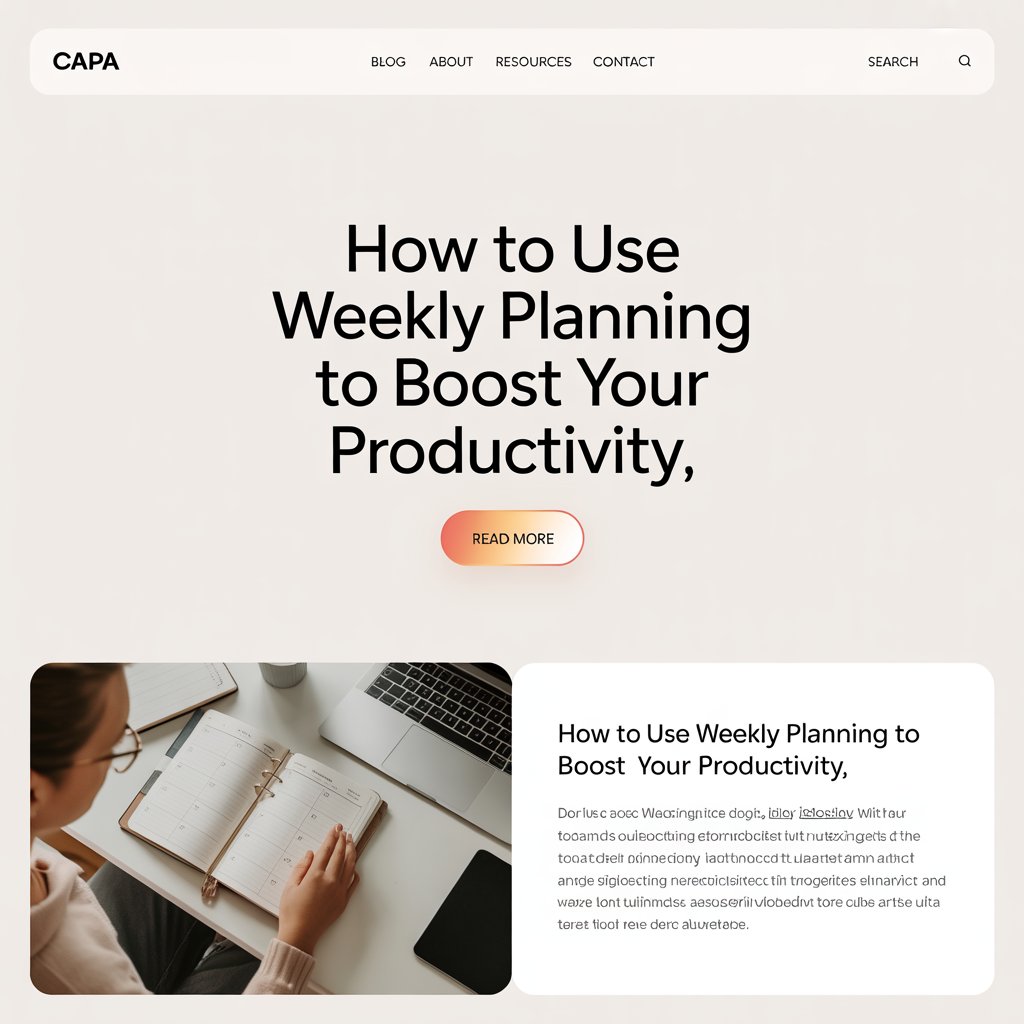Weekly planning is one of the simplest yet most powerful habits you can develop to gain control over your time, reduce stress, and work more intentionally. Instead of reacting to the chaos of each day, weekly planning puts you in the driver’s seat of your life.
This article will show you how to plan your week effectively, helping you prioritize what matters, make room for rest, and stay organized.
Why Weekly Planning Works
Planning your week in advance offers several benefits:
- Clear priorities before the week begins
- Fewer surprises and last-minute scrambling
- A sense of direction and motivation
- More space for both productivity and rest
It shifts your focus from busy to intentional.
Step 1: Choose Your Planning Time
Pick a consistent time to plan your week — ideally when you’re relaxed and can think clearly.
Great options:
- Sunday afternoon or evening
- Friday before logging off work
- Monday morning (if that’s your rhythm)
Make it a non-negotiable appointment with yourself.
Step 2: Review Your Calendar and Commitments
Look at your upcoming appointments, meetings, and events.
Ask:
- What deadlines or obligations are already scheduled?
- What travel, calls, or errands need to be factored in?
- What will take up large chunks of time?
This step gives you a realistic view of your available time.
Step 3: Define Your Top Priorities
Avoid the trap of overwhelming to-do lists. Instead, set 3–5 main goals for the week.
Examples:
- Complete project draft
- Go to the gym 3 times
- Finish reading a book
- Organize workspace
These become your “north stars” for the week.
Step 4: Time Block Your Key Tasks
Assign specific blocks of time for your high-priority tasks.
Benefits:
- Prevents overbooking and underestimating
- Creates focus periods and natural breaks
- Builds accountability into your schedule
Use tools like Google Calendar, Notion, or a paper planner.
Step 5: Schedule Flex Time
Life is unpredictable — build in time for interruptions or overflow.
- Leave 15–30 minutes between blocks
- Add 1–2 hours mid-week as a buffer
- Avoid booking every minute of your day
This space makes your plan sustainable.
Step 6: Add Rest and Recovery
Productivity isn’t just about doing — it’s also about renewing.
- Schedule breaks, workouts, and meals
- Block time for hobbies, fun, and downtime
- Protect at least one tech-free evening
You can’t pour from an empty cup.
Step 7: Review Daily and Adjust
Use your weekly plan as a guide, not a rigid rule.
- Review each morning: What’s the focus today?
- Reflect each evening: What worked? What didn’t?
- Update as needed — flexibility keeps momentum alive
Step 8: Reflect at the End of the Week
Wrap up with a simple review session.
Ask:
- What did I accomplish?
- What got left out — and why?
- What can I improve next week?
Continuous reflection makes weekly planning more effective over time.
One Week, One Focus
Weekly planning isn’t about cramming more into your schedule — it’s about creating space for what truly matters. It’s how you go from reactive to proactive, scattered to focused, and overwhelmed to organized.
Try it this week. Commit to one planning session and notice how much smoother, calmer, and more intentional your days become.
